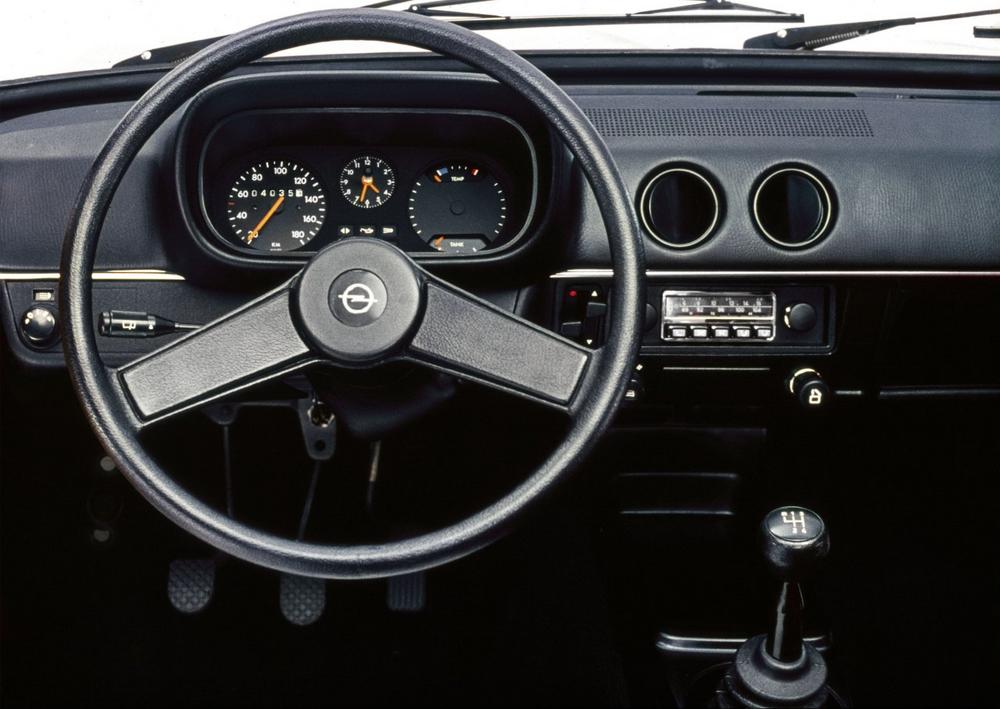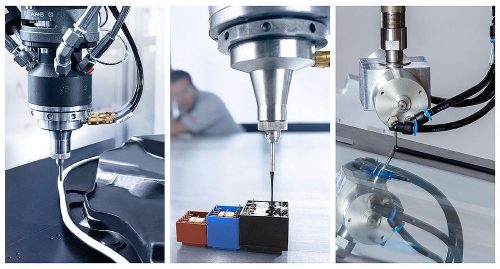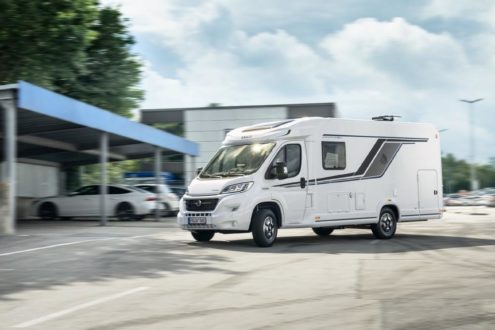
50th Anniversary of Opel Kadett C: The Car with Many Talents
- Summer of 1973: Third generation of bestselling Kadett is launched
- Spoilt for choice; Kadett C available as a saloon, coupé and estate with many additional variants including the Aero
- Safety first: Three-point seatbelts as standard, base vehicle for the “OSV 40”
- Successful competitor: Sporty Kadett GT/E celebrates rally accomplishments
- Compact driving pleasure today: New all-electric Opel Astra Sports Tourer Electric combines dynamic driving fun with responsibility
The new Opel Astra Sports Tourer Electric celebrated its world premiere at the IAA Mobility in Munich a few days ago. With its bold and pure design, modern technologies and a high level of practicality, it offers a lot of driving fun coupled with responsibility – and thus seamlessly takes the successful recipe of almost nine decades of the Opel compact class into the future. Before the Astra, the Kadett gave its name to the model series that was popular with customers for generations. One is now celebrating an anniversary: exactly 50 years ago, the third post-war generation of the compact bestseller from the brand with the Blitz, the Opel Kadett C, was launched for the first time – and it was more diverse than almost any other model before.
The 1970s: Diversity is key, the Kadett goes around the world
A smart family car, a chic second car with a practical tailgate, or a sporty coupé – the Kadett C range had many faces between 1973 and 1979. With clearly designed bodywork and a new double-wishbone front axle, the rear-wheel drive Kadett C made its debut in late summer 1973. Characteristic design features included a flat radiator grille, an engine hood with the brand’s signature crease, and a spoiler-shaped front apron. “The Kadett not only drives exceptionally well, it is also solidly built and finished. It requires little maintenance, is easy to repair and economical to run,” wrote the car-test experts at “auto motor und sport”.
Customers were spoilt for choice and could find the right Kadett variant for every taste. The third Kadett generation was initially available as a two- and four-door saloon in normal and luxury versions, as a three and five-door estate and as a coupé. Many more variants would follow, because the Kadett C was designed as a “world car”. Not only did it roll off the assembly lines in Germany, it was also produced as a Chevette at Vauxhall in the UK. In addition, it was also built in Asia, Australia and North and South America with slightly modified bodywork and technology adapted to local conditions. In Germany, efficient 1.2- litre engines with 38 kW/52 hp and 44 kW/60 hp initially provided propulsion. At the beginning of 1975, a particularly economical 1.0-litre gasoline power unit with 30 kW/40 hp joined the engine range. And with the 77 kW/105 hp GT/E fuel-injection model presented at the IAA in 1975, Opel continued the tradition of the Rallye Kadett.
Safety first: First Kadett with three-point belts, base vehicle for “OSV 40”
When the “generation C” began rolling off the production line in 1973, it was the first Kadett to have three-point seatbelts in the front seats, fixed to the B pillar at the top and bottom as well as at the belt lock. A life-saving safety feature that, thanks to its simple one-handed operation, increased acceptance among many people who did not like seat belts. Also not to be taken for granted at the time: all buttons and switches were easy to reach, even with the seatbelt fastened, and the instruments were easy to read at all times.
The biggest technical innovation of the Kadett C was the double-wishbone front suspension with coil springs. An anti-roll bar was standard for all versions. The track width was 20 mm wider than the predecessor’s to further improve handling. The further developed rear axle harmonised perfectly, contributing to neutral handling and a high level of active safety. In the event of a collision, features such as the impact-absorbing safety steering, the crumple zones at the front and rear and the passenger compartment as safety cell minimised the risk of injury.
It was therefore no surprise that the Kadett C was used as the base vehicle for the 1974 “OSV 40” safety vehicle. Stable longitudinal and transverse beams plus reinforced doors and sills protected the passengers in the event of a collision or rollover. The vehicle was designed to withstand a frontal impact with a rigid obstacle at a speed of 65 km/h, equivalent to an impact at 40 miles an hour – hence the figure “40” in the name. With this production-near prototype, Opel showed that optimum passive safety could be achieved not only with large and heavy vehicles, but also with compact, lighter cars. The “OSV 40” only weighed 960 kilogrammes. Experience gained from the development work and the testing of the “OSV 40” went into various subsequent production models.
Rallye-Kadett reloaded: Kadett GT/E celebrates sporting success
Opel demonstrated that the third generation Kadett was not only safe but also extremely sporty when the Kadett GT/E celebrated its premiere at the 1975 IAA. Its 1.9-litre engine with Bosch L-Jetronic fuel-injection delivered 77 kW/105 hp. With a weight of around only 900 kilogrammes it could reach a top speed of 184 km/h. Its design polarised – and particularly delighted motorsport fans: Above the belt line, the GT/E was bright yellow, below it was black. It was not just young drivers who dreamed of the GT/E back then; from 1976 onwards, well-known Opel works drivers who would soon make motorsport history took their seats in the cockpit. Walter Röhrl and Rauno Aaltonen were successful with the 165 kW/225 hp GT/E at the Monte Carlo Rally and the Portugal Rally. Röhrl and Jochen Berger – the first professional co-driver in Germany – scored a sensational fourth place on the Monte and Opel even achieved second place in the overall brand classification.
Opel offered the Kadett with a different kind of driving fun in 1976. With the Kadett Aero, the driver and passengers could let the wind blow through their hair and “cruise” around. Manufactured by the Stuttgart body specialist Baur, the Kadett Aero was an extraordinary convertible that featured a roll bar, Targa top and a rear folding cover. The Aero thus combined several cars in one: convertible, holiday car, and family vehicle as well as an all-rounder for city and commuter traffic. Nowadays it is considered a legendary classic that attracts enthusiastic attention at numerous vintage car rallies.
Opel Astra Sports Tourer Electric: Modern driving fun coupled with responsibility
The newest Astra generation also offers plenty of driving pleasure – and in a particularly responsible way. For the first time in the long success story of Opel compact class cars, the Astra is fully electric. With the new Astra Sports Tourer Electric, which was recently presented at the IAA and can already be ordered, Opel even has one of the first battery-electric estates on the market.
The electric motor produces 115 kW/156 hp and delivers a powerful 270 Newton meters of maximum torque at the first touch of the accelerator, ensuring brisk starts and impressive acceleration. And while many other electric cars are limited to 150 km/h or 160 km/h, the new Astra Sports Tourer Electric has a top speed of 170 km/h. The energy for a locally emissions-free range of up to 413 kilometres according to WLTP1 is provided by the 54-kWh lithium-ion battery, – which can be recharged quickly when necessary. At the same time, the electric car combines all the advantages of a spacious estate with the bold and pure design of the current Astra generation. With this pioneering combination, the new Astra Sports Tourer Electric has all it takes to successfully continue Opel’s long compact class history.
[1] Range determined according to WLTP test procedure methodology (R (EC) No. 715/2007, R (EU) No. 2017/1151). The actual range can vary under everyday conditions and depends on various factors, in particular on personal driving style, route characteristics, outside temperature, use of heating and air conditioning and thermal preconditioning.
Opel Automobile GmbH
Bahnhofsplatz
65423 Rüsselsheim
Telefon: +49 (6142) 7-70
Telefax: +49 (6142) 77-8409
http://de-media.opel.com/de
Telefon: +49 (6142) 6927466
E-Mail: leif.rohwedder@opel-vauxhall.com
![]()




